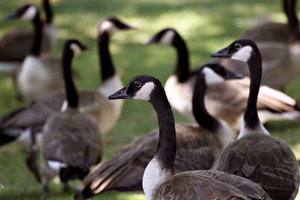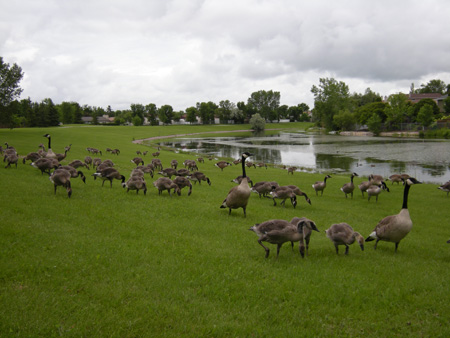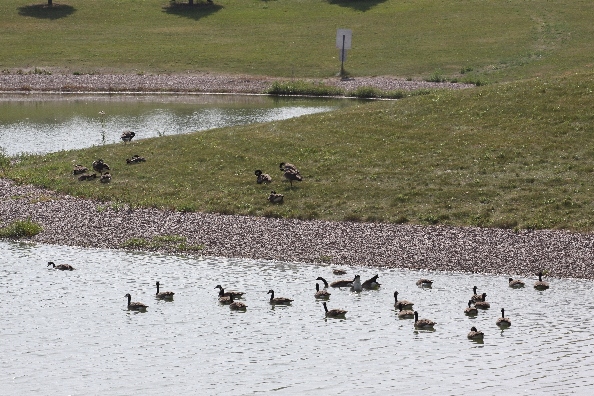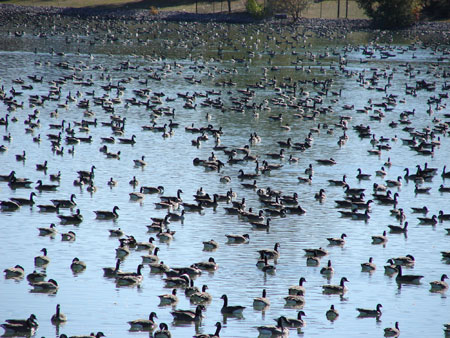Holiday season – View holiday hours for City of Winnipeg facilities and services from December 24 to January 1.

Why do geese thrive in cities?

Geese, after having been almost driven to extinction, have made an incredible comeback all over North America. Re-introduction programs in the early to mid-20th century have resulted in robust populations of Canada Geese in the 21st Century. Part of their success has been protection under the regulations in the federal Migratory Birds Convention Act, a reduction in hunting and the increase in suitable habitat in urban areas.
Living in urban areas has been beneficial to goose populations. In the United States, British Columbia and parts of southern Ontario, some goose populations do not migrate and stay in cities year-round. In Winnipeg, our resident geese still migrate, but are not going as far as many people would think. The geese populations that we have in the City of Winnipeg only fly as far south as Minnesota for the winter.
What do cities have that make them desirable locations for Canada Geese?
Abundant Food Canada Geese are almost exclusively herbivorous - they eat mostly plants, sometimes bugs get in the way and they eat those, too. Mown, fertilized grass in parks and in backyards is the ideal food for geese. Fresh, young shoots of species such as Kentucky bluegrass are a goose food favourite.
Security from Predators Geese prefer to have an open view of their surroundings. This means no trees, shrubs, rocks or other plants where predators could lurk. The wide open spaces of a city's sports fields, parks and school yards provide this sense of security. A lower risk of predation in cities also provides security.

Preferred Nesting Habitat Geese prefer to nest within 50 metres of a body of water and when the goslings hatch it is a quick trip to relative safety. The City of Winnipeg has over 100 retention ponds, providing a lot of ideal nesting habitat for geese.
Easy Access to Water There is a portion of time in the summer months when both adult resident geese and goslings are flightless. They need to be able to quickly access water. Barriers that prevent geese from moving easily into water, especially for the smaller-bodied goslings, could be emergent vegetation such as cattails or even large rocks. Even when geese can fly, walking in and out of ponds is preferred.
Human-Goose Contact Most retention ponds in the City of Winnipeg are in residential areas. This means that people may feed geese, which geese begin to readily accept. Feeding by humans can increase goose loyalty to an area.
Resident or Migratory Goose?
There are 2 types of geese in Winnipeg: resident or urban geese and migratory geese

Resident geese (aka urban geese) generally don't migrate or migrate shorter distances to their wintering grounds in the US. In Winnipeg, the resident geese still migrate. These preferred habitat for resident geese is around retention ponds and in parks. Resident geese are usually made up of one of the 'Giant' sub-species. Resident geese are accustomed to the presence of people and the noises of city life.

Migratory geese are the geese that appear in the fall using the City of Winnipeg and the surrounding areas as staging grounds. We will see the population of geese swell in and around the city, estimates have reached up to and over 100 000 in the Greater Winnipeg Area. Some of migratory geese that arrive can be much smaller than our resident geese as they belong to different sub-species. Their behaviour can also be different, often flying away or moving into a retention pond when people are present.
